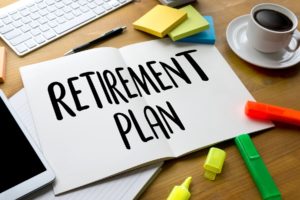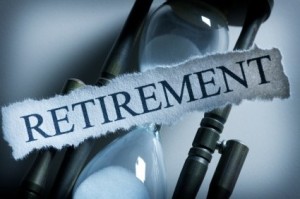February 6, 2020
 You’re never too young to plan for retirement. In today’s busy world, however, developing a retirement plan can be quite daunting. Fortunately, many financial resources make it possible for people to plan for their retirement early enough. Generally, these tools come with advice, great benefits, goals, and progress reports, all at your fingertips.
You’re never too young to plan for retirement. In today’s busy world, however, developing a retirement plan can be quite daunting. Fortunately, many financial resources make it possible for people to plan for their retirement early enough. Generally, these tools come with advice, great benefits, goals, and progress reports, all at your fingertips.
Plan Your Retirement
Retirement planning is simply the process of determining income goals in retirement and the necessary steps to achieve this. This part is important because it inspires you to take charge of your finances.
Knowing exactly what’s draining your purse is vital to planning your retirement. If you’re not sure of what’s emptying your account, what you have left, and at what level of saving you should be for your planned retirement, then you may need digital apps to help you budget and plan accordingly.
Determine A Good Amount For Retirement
When it comes to saving for your retirement, asking a stranger how much is the right amount is like asking a Londoner how much it costs to commute from Chicago to New York. He/she would more than likely reply with some follow-up questions such as “Will you drive or fly?” and “Where are you now?”
In the same vein, when it comes to how much you need to save for retirement, you need to put some things into consideration for effective planning, including:
• Your current financial status.
• Your anticipated retirement lifestyle.
• How much you stand to collect from social security?
• When do you plan to retire?
• Your investment options.
For early retirement, some financial planning experts suggest between 10-15% of your current income. Whether you’re pursuing early retirement or not, the best way to determine your savings level is to create a retirement limit plan and to do the math to see if you’re still on course.
The rule of thumb is that after you’ve calculated what you believe you possibly need during retirement, multiply the amount by 25. For instance, if the amount is $20,000 per annum, you’ll need 25 × 20,000 = $500,000 to retire comfortably. In contrast, if you’ll receive a $5,000 annual pension and another $5,000 in Social Security benefits, you’ll need only half of the $20,000 per year from your savings account. Therefore, you’ll need just $250,000 saved, which is a good amount for retirement.
Set A Guide For Your Retirement
The majority of the news about retirement nowadays is negative – you may have to work longer because Social Security won’t be enough to save you, and with a longer life span, your savings may not last. This sad commentary may spur you to give up and abandon your retirement goals. But, this approach is likely to complicate things in the long run.
The truth is that having an hitch-free retirement isn’t all about being wealthy, but more about investing your assets wisely. The steps you need to consider in formulating an effective retirement strategy include:
1. Setting your retirement goals to include what you wish to achieve and your financial needs.
2. Creating a financial retirement budget to achieve your objectives.
3. Getting online help from professional financial planners, counselors, financial institutions, and digital applications that could help transform your funds into investment vehicles for a financially stable retirement.
Conclusion
Now you’ve got one or two tips to set you up on the way to plan efficiently for your retirement without hiccups. If you’re finding it difficult to draw a proper retirement plan, consider hiring a financial advisor to help you outline your retirement plan and guide you accordingly.
You may also try out digital apps that are sometimes free to use and quite efficient.
However, for those who are not so tech-savvy, selecting the best apps to help plan your retirement early could be difficult since not much information is provided about them in the popular app stores. To this end, we compiled a list of the best applications to help you plan for your retirement.
Apps to help go into early retirement.
While going through the list, you’ll find many useful apps with unparalleled features for your benefits.
Tags:
budgeting,
economy,
Financial Assistance,
investments,
money,
personal finance,
Retirement,
Retirement Planning,
savings
August 16, 2014
 Retirement planning is a serious business and the sooner you get into it, the better. We often tend to procrastinate, thinking that we have enough time left for the same, but this often makes the task tougher than it would otherwise have been. So the question is what exactly is retirement planning, and how important is it for your future?
Retirement planning is a serious business and the sooner you get into it, the better. We often tend to procrastinate, thinking that we have enough time left for the same, but this often makes the task tougher than it would otherwise have been. So the question is what exactly is retirement planning, and how important is it for your future?
The process of retirement planning involves determining what kind of funds should be available to you at the time of retirement, to live comfortably post your retirement. There are a lot of factors that you would need to consider like when will you want to retire, where will you live, and what kind of a lifestyle will you have post retirement. Each additional year you want to retire early raises your goal considerably as you need to account for all the regular monthly expenses, medical and emergency expenses, vacations, celebrations etc.
When you see the costs add up after keeping in mind the inflation, this is likely to be your retirement goal and is clearly dependent on the type of life that you wish to lead. You may come across many typical figures that people throw at you regarding a retirement corpus that one should have, for example 20 times your income and so forth, which can be only used as some vague guideline. You must consider some important points to make sure that you are a smart investor when it comes to your retirement investing.
Evaluate the available instruments for retirement savings
There is a host of saving options available in the market when you want to invest for your post retirement days. There are many tax- efficient ways that can help you build up your retiral kitty, some of which can be availed directly through the employers while other plans are available through investment brokers or banks. However, it is important to closely look at each of these options to determine the benefits and derive the maximum profit by using them judiciously, when your aim happens to be a healthy retirement corpus.
There are some good retirement options that you can explore at your employers, as some may offer unmatched benefits and even give some kind of cushioning against the volatile stock market conditions. It is important to understand and evaluate the risk and benefits associated with each of the options. It is often seen that younger investors are more bent on investment options that have higher returns even if they have higher risks as they have enough time available to recover from the losses that may arise. However, in case you do not have too many years before you retire, then it’s best to avoid such options as you may not be able to recover if you lose your investments and will be better off with some conservative instruments with lower risk factors.
The following are some of the options available for planning your retirement:
- 401 (K) and other Employer Plans: There are several employer driven plans like the 401(K)s that can be utilized by the individuals to build up their retirement kitty while saving a considerable amount of tax too in many cases. They are also quite hassle-free as you can directly get the amount debited from your paycheck.
- Fixed Benefit Plans: There are many employer sponsored plans that offer a fixed the sum of money based on certain factors like salary drawn and the years of service one has put in at the establishment .
- IRAs or the Individual Retirement Accounts: These allow you to move pretax amounts up to certain annual limits towards tax efficient investments. These investments can also be tax deferred.
- Roth IRA: This can be seen as a retirement option that is similar to a traditional IRA though there are certain differences in the taxation of the contributions as well as the distribution income.
- SEP IRA: This is targeted at the employer or self-employed individuals, and they can direct 100% of their contributions towards various channels of their choice.
- SIMPLE IRA: this is a commonly used retirement plan by employers with 100 or less employees in that establishment.
Tags:
401K,
budgeting,
financial planning,
Financial Retirement,
investments,
money,
Retirement,
Retirement Planning
May 31, 2012
 Are you reaching that point in your life when you have to plan for your retirement? You must not rely on your social security money alone for covering all the expenses after your retirement. Not having a proper retirement plan will lead to a bad situation after your retirement and that is something that you must avoid. Here are 4 retirement plans that you can consider and choose from.
Are you reaching that point in your life when you have to plan for your retirement? You must not rely on your social security money alone for covering all the expenses after your retirement. Not having a proper retirement plan will lead to a bad situation after your retirement and that is something that you must avoid. Here are 4 retirement plans that you can consider and choose from.
1. The 401(K) Plan
This is one of the most popular plans that employers use to secure their employee’s retirement. According to this plan, you must match your employer’s contribution to the plan (which oscillates between 1% and 6% of the payment) to take full advantage of the plan. Plan your investment properly so that you can take full advantage of it after retirement. Failing to match your employer’s contribution will make the investment in this retirement plan redundant. There are many other flexible investment plans for helping you with your contribution to the retirement plan. Choose one that you can afford.
2. Savings Incentive Match Plan for Employees (SIMPLE) IRA
Many small time employers secure their employee’s retirement using this plan instead of the 401(K) plan. The only difference between these two plans is the fact that this plan has no maintenance fee as such from the employer’s side and thus is a popular choice with most small time employers. The contribution that the employee is supposed to make to this plan is deducted automatically from the pay check.
3. Traditional IRA (Individual Plan)
It is always advised that you should maintain an individual retirement plan along with the employer’s retirement plan that is already in place. The contribution that you can make to this plan is limitless and depends on your personal financial abilities completely. The contribution eligibility is set at $5,000, plus $1,000 catch up for those over 50 years old, but not per account.
4. Roth IRA (Individual Plan)
This plan is similar to the Traditional IRA plan with the same limit and eligibility criterions. The only difference is the fact that the contributions you will make to this plan is not income tax deductible.
In case you find out that you are ineligible for the IRA individual plans, you can always set up an annuity fund. The tax benefits are lower than the tax benefits one gets with the IRA funds and also the contribution fees are higher than usual. These shouldn’t deter you from having a solid retirement plan in the first place.
Tags:
cash,
economy,
financial planning,
Golden Years,
money,
Retirement,
Retirement Planning,
savings
May 18, 2012
 Many ordinary people have recently discovered that they may not have the nest egg that they’d planned for in their retirement. Having put away regular monthly installments into investments and other savings plans, people have now discovered that these investments could be worth a lot less than they’d been led to believe. Mis sold investments are likely to cause a lot of heartache
Many ordinary people have recently discovered that they may not have the nest egg that they’d planned for in their retirement. Having put away regular monthly installments into investments and other savings plans, people have now discovered that these investments could be worth a lot less than they’d been led to believe. Mis sold investments are likely to cause a lot of heartache
and financial difficulty in the years to come, as people have to come to terms with the fact that they might not have sufficient money for their retirement and they could well have to rethink their plans for the forthcoming years.
With the issue of mis sold investments now coming to the fore, there is some hope for people who were given inaccurate information when they signed up to long-term investment plans. Compensation claims are being investigated and there is at least some hope of recompense for those who genuinely took out investments based on misleading information. Many people put away regular savings for their retirement, or as a means of paying off their mortgage or saving a nest egg for retirement. Without in-depth personal financial knowledge, people will have relied upon the advice offered by financial advisers, banks and other institutions in order to come to a decision about which investments to choose.
It is because this advice was – in certain circumstances – ill thought-out, or the specific investment inappropriate for the circumstances of the individual at the time, that a mis sold investment bond, or other investment product, will now come under scrutiny. It is hoped that genuine cases of mis sold investments will now be rectified to a certain extent, as individuals can make a claim for
compensation and hope to recoup their losses.
Many people will have been relying on the expected return on their investment in order to fund their retirement. The knowledge that this pot of money might no longer be available can put huge financial and emotional stress on an individual or a couple and this also needs to be taken into consideration. The situation needs to be rectified, not only on behalf of the customers who have
been mis sold investments, but also in order to ensure that financial institutions and individual advisers are seen to be held to account for any inaccurate or misleading information that they have given to customers in the past regarding the investment of their money.
With the issue of mis sold investment now out in the open, it is hoped that the message is getting through and that anyone who believes they have been misled will be able to come forward and receive more information about their investment and whether they might potentially have grounds for a claim with regards to their product. When a lifetime of savings could potentially be at stake, it’s imperative that people are now given the opportunity to check up on their finances and to have some peace of mind that their money is safe and their retirement fund will be sufficient for their needs over the years.
Tags:
Costs,
financial planning,
investments,
money,
Retirement,
Retirement Planning,
Sales
May 3, 2012
 Saving for your retirement can seem like a daunting task for most folks today, but it is something that should be every working person’s goal and ultimate aspiration. Despite the seemingly impossible task of saving up for your own retirement, especially at the last moment, there are little ways that you can consider that can bring you closer to your goal of saving for retirement, without having to work like a mule. Here are a few tips on how to increase your retirement savings:
Saving for your retirement can seem like a daunting task for most folks today, but it is something that should be every working person’s goal and ultimate aspiration. Despite the seemingly impossible task of saving up for your own retirement, especially at the last moment, there are little ways that you can consider that can bring you closer to your goal of saving for retirement, without having to work like a mule. Here are a few tips on how to increase your retirement savings:
Downgrade – Simple living is best
Living on the edge of their means is one of the reasons why a lot of individuals find it difficult to save up for retirement. It is quite common now-a-days to find people that are living well beyond their means. People who are in a situation like this are wasting money that could potentially be saved and used for their retirement schemes. Contrary to what people say, living simply is not something to be ashamed about – so if you’re looking for a fast way to save more for your retirement, then consider downgrading your living expenses is one great way to go about it.
Invest
Try investing in businesses or other secure means, this can increase your overall income and is another great way to save up for retirement money quicker. Not all investments promise a good or profitable turn-over in the end, so choose businesses that you want to invest in wisely. Businesses that have a strong long term grow potential are good, so are businesses that cater to the masses have the best chances of providing you with a steady profit.
Pension offers are opportunities
If the company you’re working for offers retirement benefits or saving pools, consider chipping in a little of your income into it. A little goes a long way. Pensions and benefits are also a great means to help out with your retirement savings goals. Availing of healthcare and pensions can add to your savings by cutting down on the need to look for more money. Because these types of benefits can be earned while you’re still in working prime, you can be sure that you’ll have a substantial amount by the time you do decide to call it quits and put your feet up.
Prioritize
If you want to meet a specific amount of money to realize your retirement dreams, then you really have to prioritize for it. Coming up with a viable sum that is more than what you’d expect to spend for the duration of your retirement and beyond, should be the main outline of any savings schemes. It is wise to plan ahead in order to set priorities, but it is also important to set a goal beyond the expected amount that you think would need for a comfortable retirement.
Pooling all of the profits from the above mentioned tips should provide you with enough provender to retire in comfort or at least meet you basic needs, given that you don’t expect anything extremely extravagant or opulent. Investing and not spending beyond your means is the key to a successful savings and retirement plans.
Planning for a retirement needn’t be stressful or difficult. Everything can be planned out and achieved with good old fashioned hard work, determination, and foresight. Utilizing holistic tips like these as part of your overall retirement plan will definitely help to improve your financial situation now, and will also ensure that you will have more savings available for when you are finally ready to retire.
Tags:
budgeting,
Finance for insurance,
financial planning,
money,
Retirement,
Retirement Planning,
savings
 You’re never too young to plan for retirement. In today’s busy world, however, developing a retirement plan can be quite daunting. Fortunately, many financial resources make it possible for people to plan for their retirement early enough. Generally, these tools come with advice, great benefits, goals, and progress reports, all at your fingertips.
You’re never too young to plan for retirement. In today’s busy world, however, developing a retirement plan can be quite daunting. Fortunately, many financial resources make it possible for people to plan for their retirement early enough. Generally, these tools come with advice, great benefits, goals, and progress reports, all at your fingertips.




Recent Comments